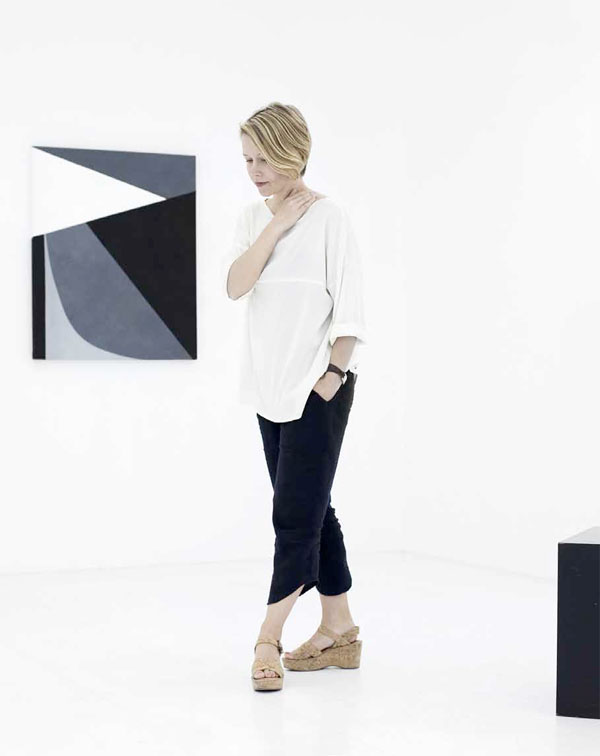
RECONSTRUCTING ART HISTORY…Helena Papadopoulos Gallery will be hosting the first solo exhibition of American artist, Sarah Crowner in Athens , entitled ¨Zig Zag & Curves” from the 19th of May until the 9th of July. Inspired by early modernist movements, her works also evoke 1950’s and 1960’s Californian hard-edge painting, with her interpretation of geometric compositions. Working on canvas and using an industrial machine, Sarah Crowner re-defines geometric abstraction, connecting the past with the present.
Geometry, 50s and 60s aesthetics, patchwork… how would you describe your art?
I am using hard edged modernist abstract painting from the 1950s and 1960s like a pattern or a template, looking at its forms and compositions objectively. I like the idea of cutting up and translating these paintings and repositioning and re-creating them using another, more physical language, that of sewing. I am using art history as a medium in the same way that other materials are mediums, such as paint and clay, something malleable, something that I can collage and re position.
Constructivism: would you say that this is the genre you feel more attached to?
Constructivism is interesting to me, but not more than other movements such as dada or surrealism, or late 50s Californian modernism.
Is irony important in art?
Irony, to me, is not important in contemporary art. on the contrary I see it as a crutch, or even a curtain to hide behind. I feel it is more daring to be sincere.
The act of sewing creates abstract paintings, inspired by the art of theater and dance. Could you elaborate please?
Seen from purely a material and physical standpoint, the paintings are sewn in the same way a theatrical backdrop might be made. In terms of the forms and compositions in the images,
curves and zig zags reflect movements of the body on stage and refer to a narrative, especially with the red and white canvas pieces.
What is the reasoning behind your direct references to artists of older generations?
Art history to me is like an ongoing conversation, in a way, it is like conversing with ghosts. An interesting idea for me is the idea of allowing ghosts of art history to speak again.
Which other artists of your generation do you admire?
Some of the artists in my generation who I admire happen to be photographers dealing with Surrealism in a contemporary way, such as Talia Chetrit and Michele Abeles. I also have always loved Sherrie Levine and Louise Lawler, who are from an older generation but continually surprise and provoke me.
Interview: Eleftheria Ioannidou | photo: Marios Kalamaris



